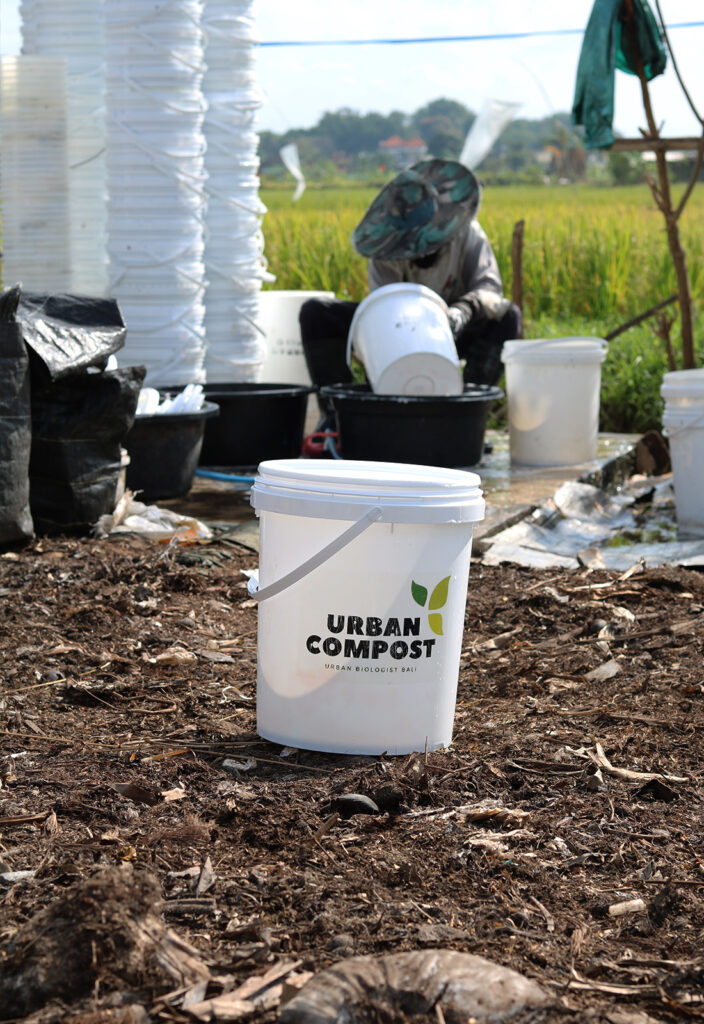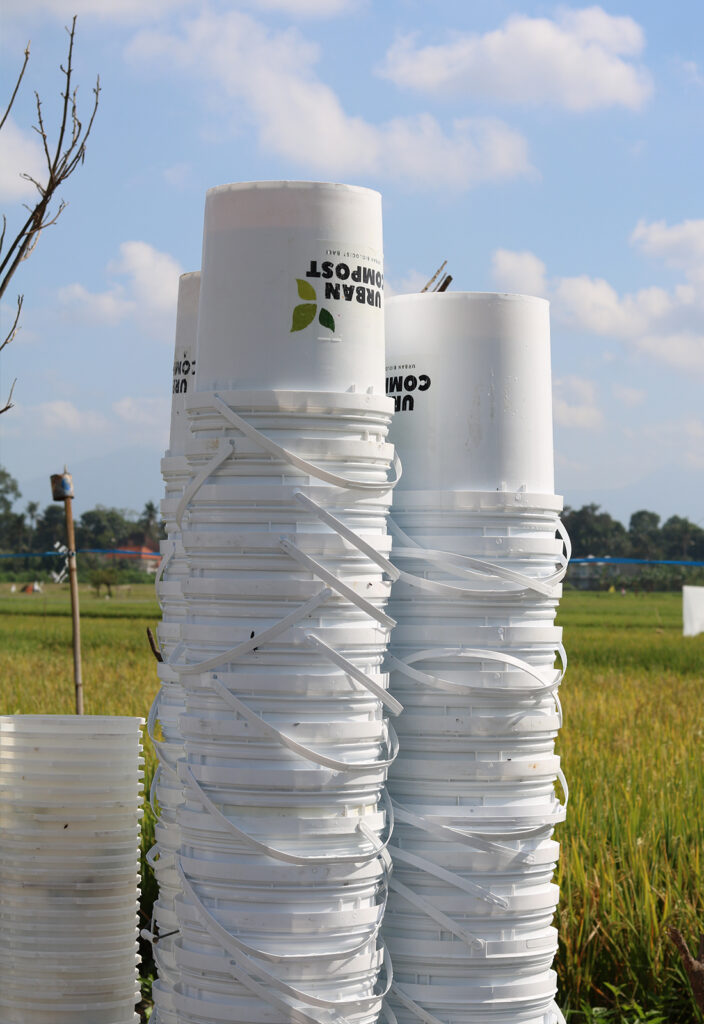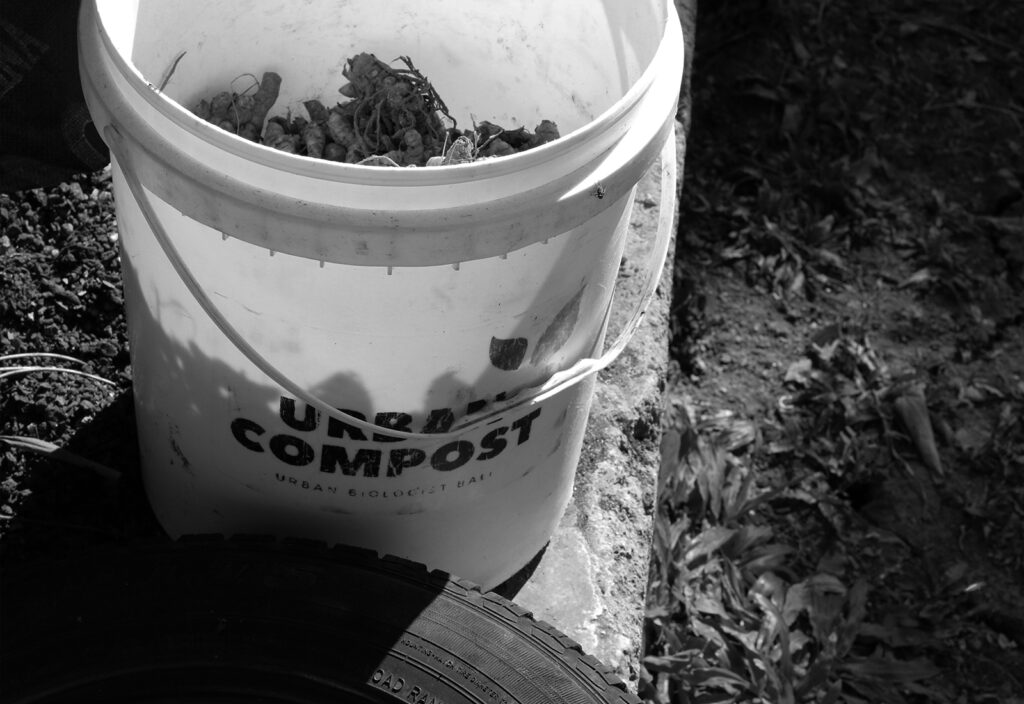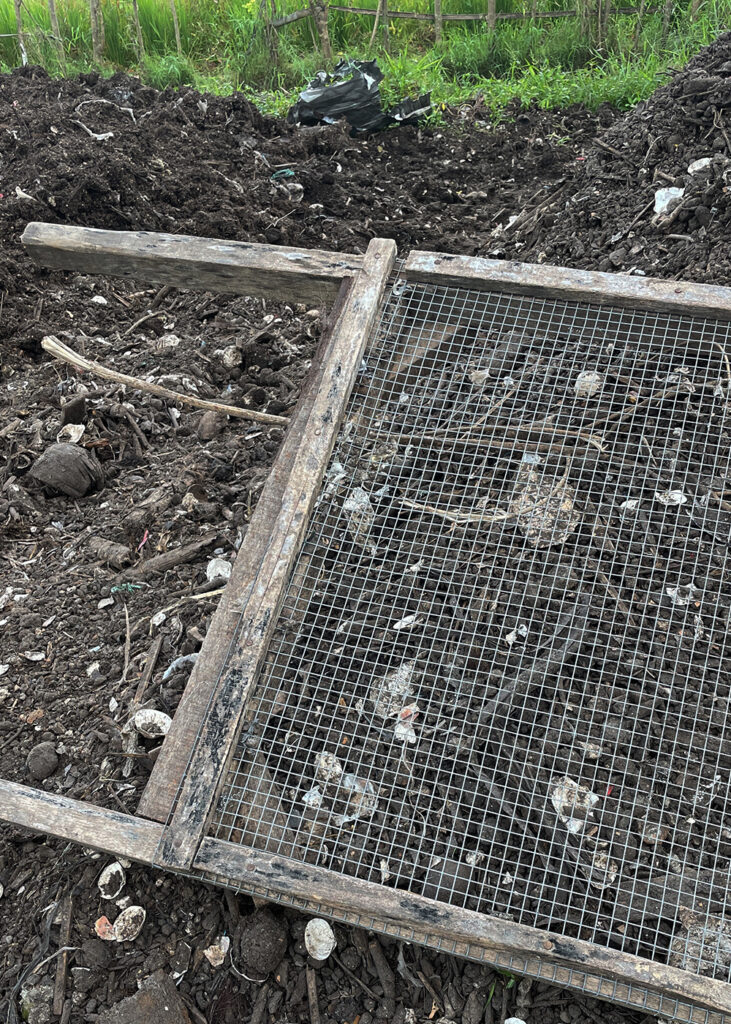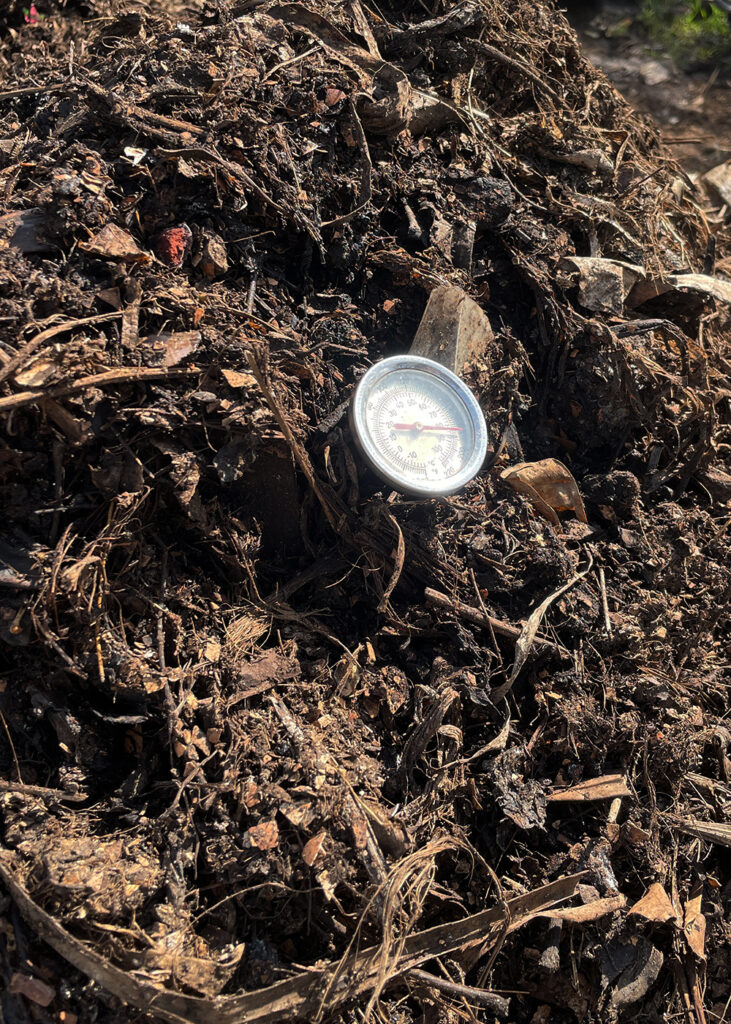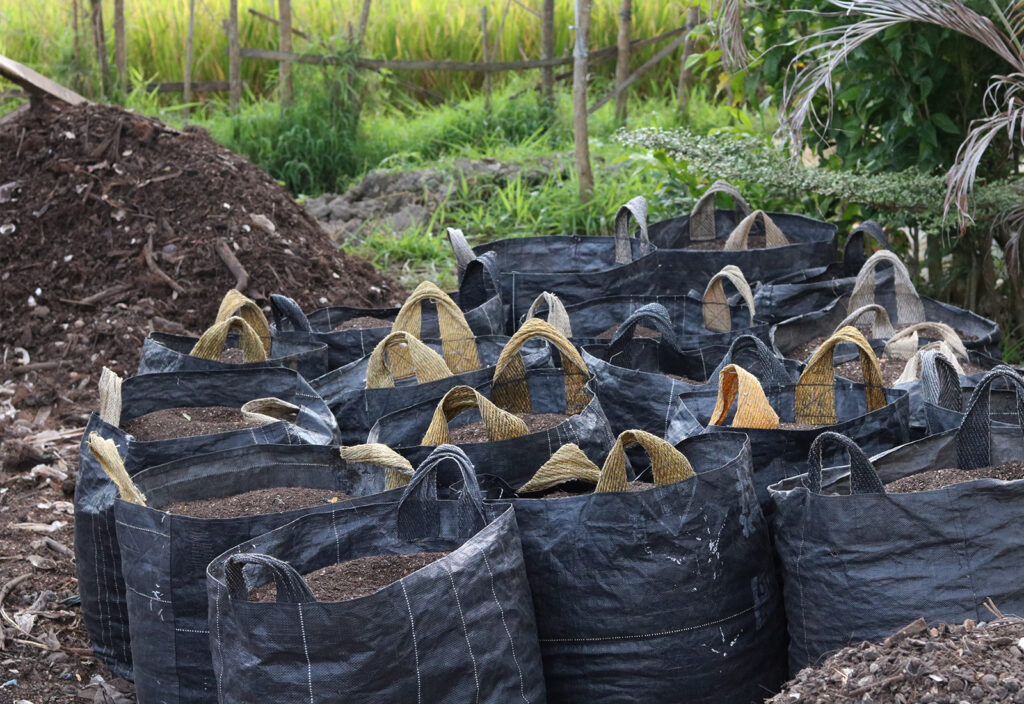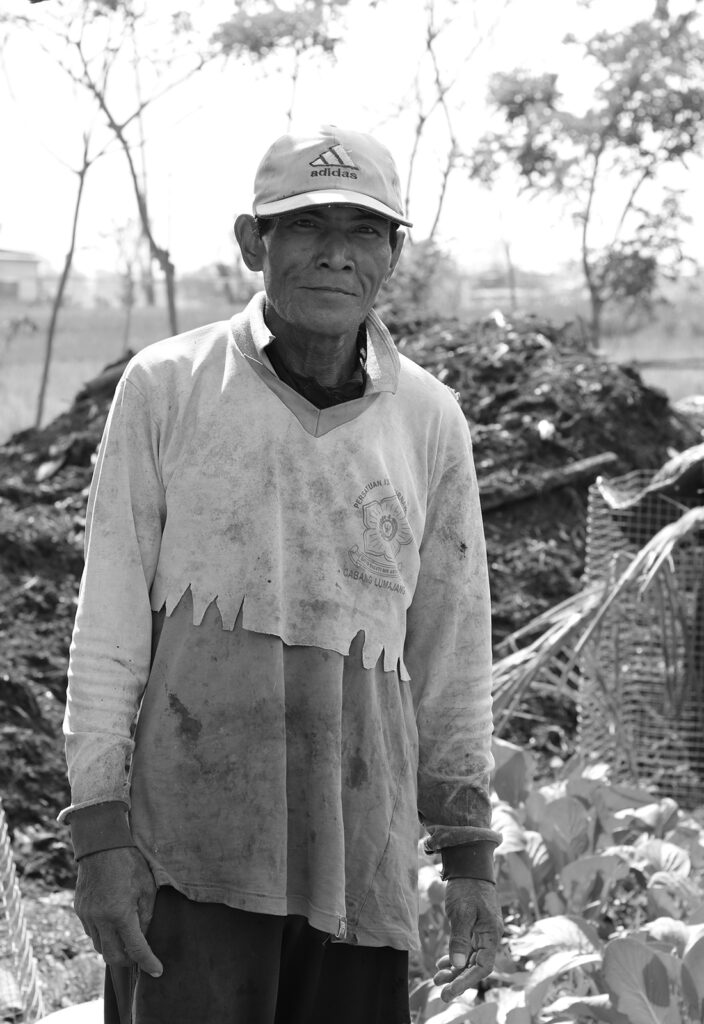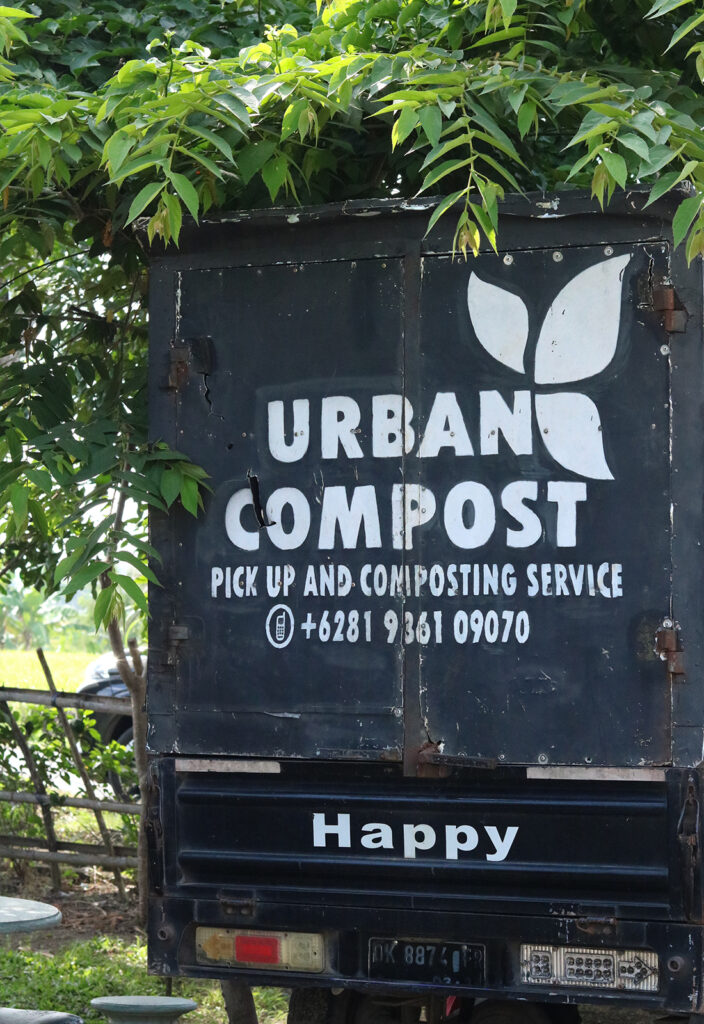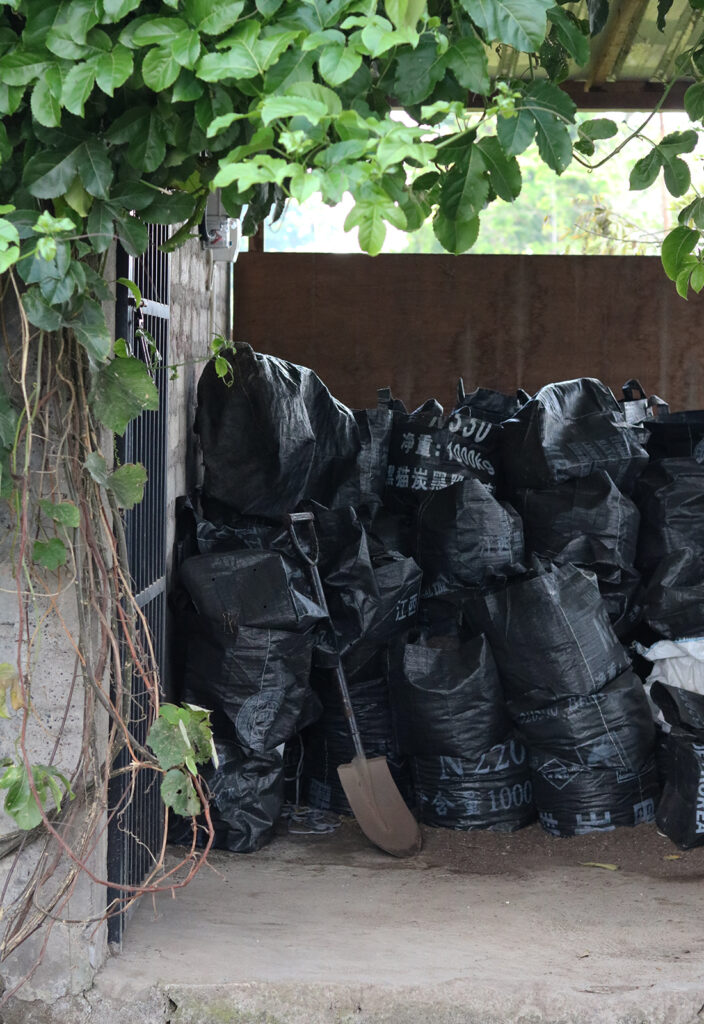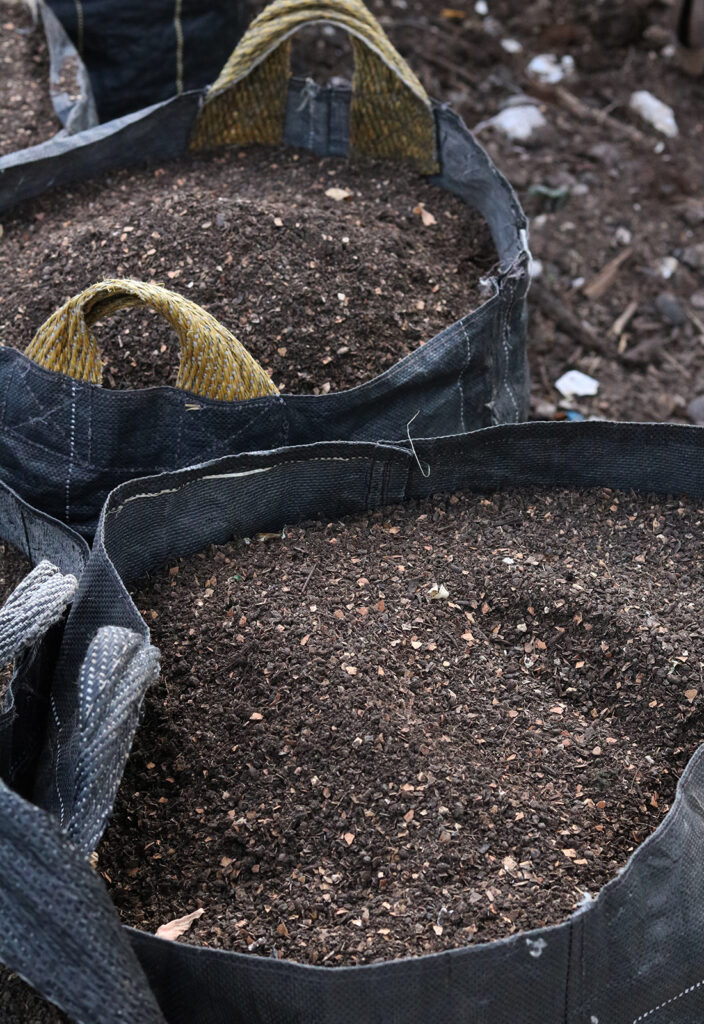
THE PUNCH SUPPLIERS
What is the Aerobic Composting
Method by Urban Compost Bali?
Urban Compost provides pickup services including reliable bin collection and scheduled pickups up to 3x a week.
All the organics collected (food scrap and garden trimmings) are send to Urban Compost Bali composting facilities to be properly composted. The finished product (the compost) is then given back to the subscribers as part of the service. A yearly report regarding the composting achievement is provided too.
“We make sure that all the organics that we collect are 100% composted instead of going to landfill or being burned. By doing so, subscribers divert the 60% of daily waste they produce. Through composting, we also reducing the GHGs and offsetting the carbon footprint. The compost itself is excellent for soil conservation, plantation and sustainable farming program.”
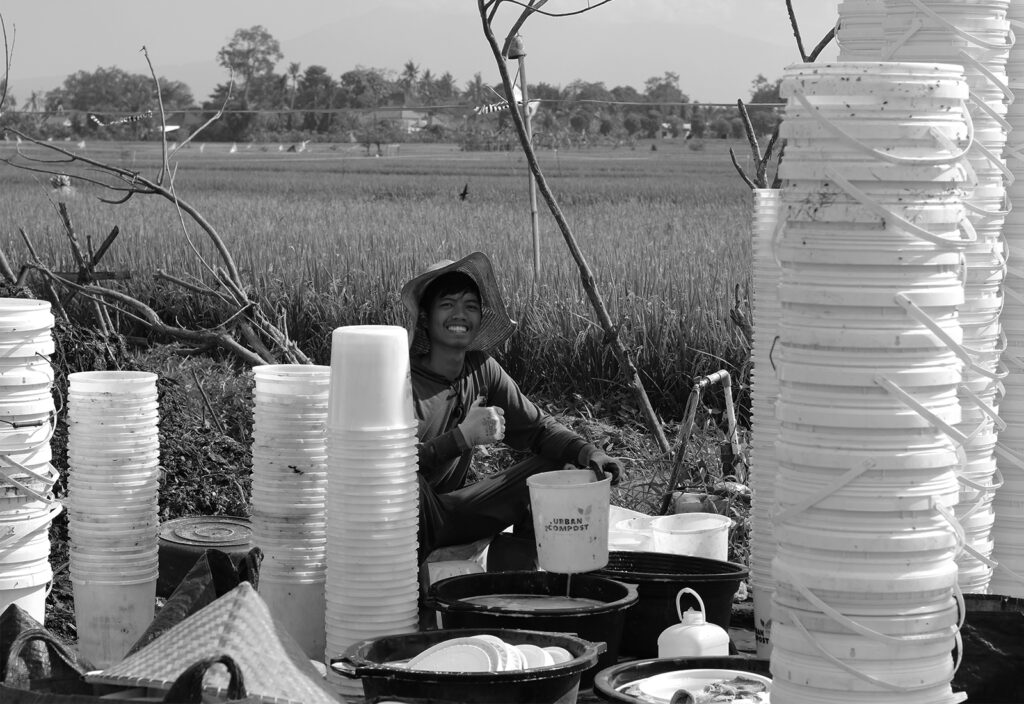
COMMITMENT 1
Sustainable Management
By documenting and implementing a clear sustainability plan, Urban Compost and its team are demonstrating their commitment to the environment and their communities.
COMMITMENT 2
Sustainable Building & Design
By designing clean and functional buildings & products, Urban Compost is minimizing the use of resources, unnecessary waste, and harmful emissions.
COMMITMENT 3
Cultural Interaction & Heritage
By incorporating authentic elements of traditional culture in their operations, Urban Compost is committed to celebrating and preserving Bali’s local cultural heritage.
COMMITMENT 4
Sustainable & Local Sourcing
By giving priority to sustainable, local, Fairtrade, organic and/ or recycled produce, Urban Compost is emitting less carbon emissions while celebrating the local economy.
COMMITMENT 5
Equal & Local Employment
By giving equal opportunities to local residents including management positions, Urban Compost is promoting diversity and elevating employees engagement.
COMMITMENT 6
Staff Engagement
By engaging their staff in the implementation of the company’s sustainability goals, Urban Compost is increasing sustainability knowledge, competence and action.
COMMITMENT 7
No Single Use Plastic
By not using single use plastics, Urban Compost minimizing by millions the amount of plastic ending up in the streets, in the rivers and in the ocean.
COMMITMENT 8
Waste Management
By having a clear waste management plan in place with actions to reduce, separate and reuse / recycle waste, Urban Compost is not only minimizing the amount of waste in Bali; the brand is also leading the example to their employees and customers.
COMMITMENT 9
Sustainable Packaging
By using sustainable, natural, recycled and/or biodegradable packaging, Urban Compost is significantly reducing their environmental impact.
COMMITMENT 10
Energy Conservation
By using equipment and practices to conserve energy, Urban Compost is contributing to reduce the demand for carbon-intensive power plants which in turn benefits the environment by reducing carbon dioxide emissions.
COMMITMENT 11
Water Conservation
By using equipment and practices to conserve water, Urban Compost is contributed to the well-being of the environment and their communities.
COMMITMENT 12
Biodiversity Conservation
By actively supporting, protecting, and promoting biodiversity, Urban Compost is contributing to ecosystem productivity and improving the life support system for our planet.
COMMITMENT 13
Community Support
By supporting their local community through various ways, Urban Compost is offering jobs, providing goods, services, and financial support to their community.
COMMITMENT 14
Guest Awareness
By providing accurate and transparent communication regarding the company’s sustainable practices and goals, Urban Compost is helping guests make better purchase decisions.
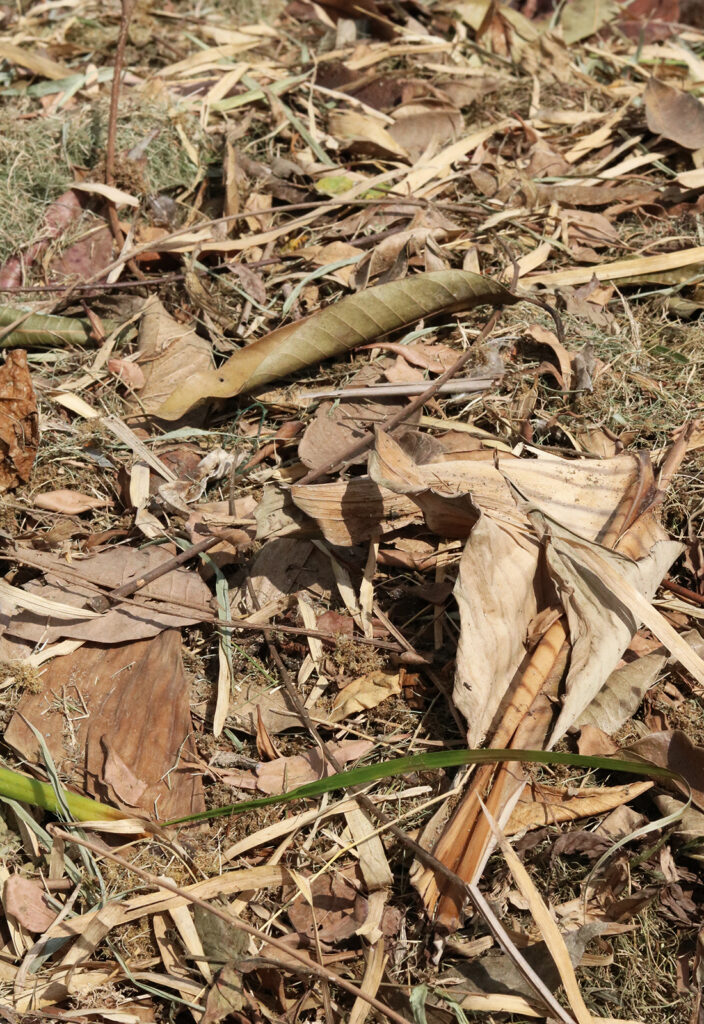
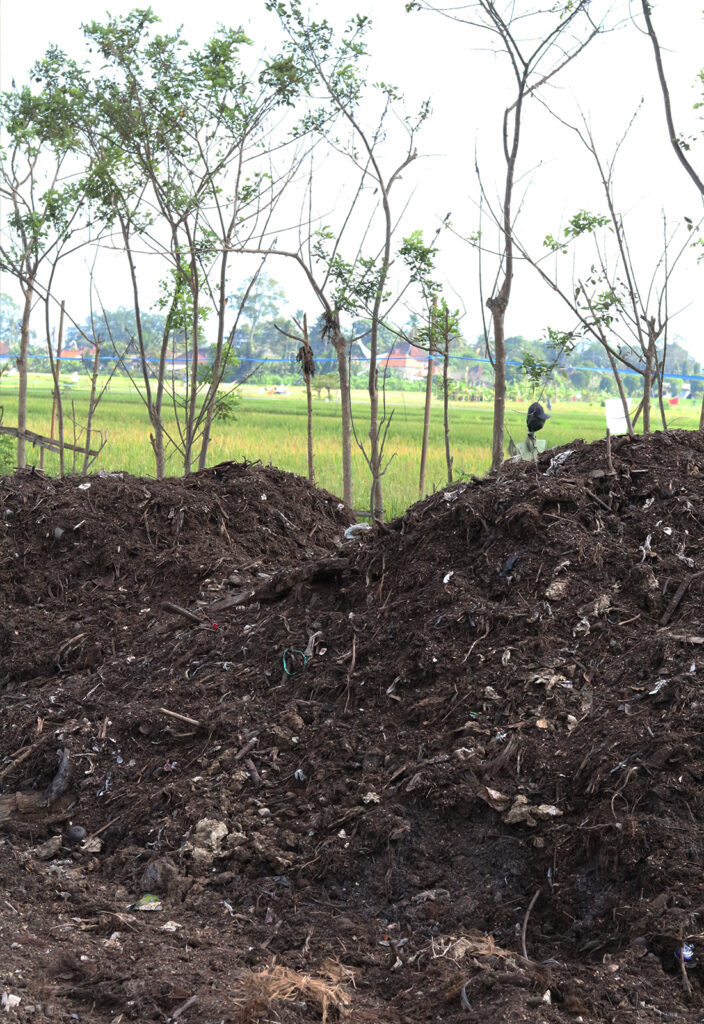
3 Phases of the Aerobic
Composting Method by Urban
Compost Bali.
PHASE 1 – PILING
Once the food scrap (source of N, Nitrogen) and garden trimmings (source of C, Carbon) arrive into the composting facility, they both will be put into the composting cell. The shredded garden trimmings are part of the first layer (about 10cm thick). The food scrap is then added as a second layer (also 10cm thick) creating a 50/50 proportion of shredded garden trimmings and food scrap by volume. It keeps going that way until reaching 1m height.
PHASE 2 – AERATION
After 1 week (or no more than 10 days), the materials in the cell must be tossed out to the front area (which has been topped up with 10 – 20 cm thick of shredded garden trimmings, acting as bedding) to go through the aeration process.
The aeration process means to activate the aerobic native bacteria in the pile. This must be done by moving the pile little by a little, either using hand tools (shovel or pitch folk) or excavator machine – this way all the surfaces of the pile is exposed to the oxygen.
After moving, the pile goes back upside down to the previous position (the top now become the base, and vice versa) – this is turn no.1.
After 3 days, the bacteria become active as the pile heats up to 70°C. After 5 – 7 days, the pile can heat up to more than 80°C and it should be moved again (turn n.02) so that all the microorganism, except the thermophilic actinomycetes bacteria die.
This step is repeated a minimum 5 times or when the pile looks darken, soil-like form, and no heat up (no more than 40°C). Sometimes, when the ambient temperature is hot and dry, every time the pile is turned, watering the pile is necessary to keep the humid condition of the pile.
PHASE 3 – MATURITY
After 5 weeks of aeration process, the pile will be left on the surface in the specific area for the maturity process.
At this stage, the pile will not exceed 35°C – so that many creatures such as worms, micro insects, grubs, nymphs, and other billions beneficial soil bacteria and fungi will thrive inside the pile, creating diverse micro ecosystem, improving the compost texture and binding the essential macro and micro nutrient.
After 2 weeks of observation – making sure that the temperature doesn’t heat up anymore, the compost can be harvested and applied to recondition the soil or feed the plants. Sieving is sometimes necessary in order to get the finer compost product and filter any big chunk – it can be tossed back to the active pile in the Phase 2nd.
